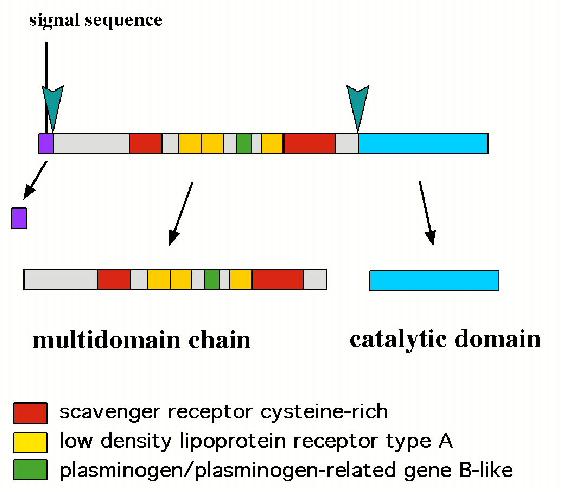

Retinoic acid target genes
RA cannot affect the differentiated state of the
atrial epithelium directly. And RA-
treated mesenchyme cells can induce a secondary
axis in the developing bud.
These results suggest that mesenchyme cells secrete
transdifferentiation factor(s)
in response to RA. We planned to isolate
cDNAs for RA target genes of which
expression was activated by RA.
Using a fluorescent differential
display technique, we identified a few cDNA clones
(Figure 1). One of them encoded a modular
protein that contained serine protease
catalytic domain in the C-terminal region and
several distinct protein-protein
interaction motifs in the N-terminal region.
This protein, named tunicate retinoic
acid-inducible modular protease (TRAMP), is a
candidate transdifferentiation factor.
Another RA target gene was for a gonadotropin-releasing
hormone receptor-like
seven pass G-protein coupled receptor. We are
now analyzing functions of these
proteins.


Figure 1 (left): A result of the differential display analysis.
A PCR product indicated
by arrowhead were amplified only from a cDNA sample prepared from RA-treated
mesenchyme cells (+).
Figure 2 (right): A schematic drawing of the primary structure of a
putative protein
product of a RA target gene named TRAMP.
References
Ohashi, M., Kawamura, K., Fujii, N., Yubisui,
T. & Fujiwara, S. (1999)
A retinoic acid-inducible modular
protease in budding ascidians.
Develop. Biol. 214:
38-45.
Fujiwara, S., Kamimura, M., Ohashi, M. &
Kawamura, K. (2001) Molecular bases
of bud development in ascidians.
In
The Biology of Ascidians. (ed. Sawada, H.,
Lambert,C. & Yokosawa,H.) Elsevier
Science Publisher, pp.300-304.